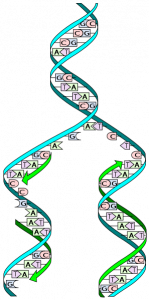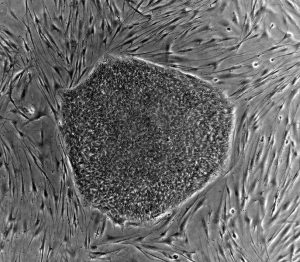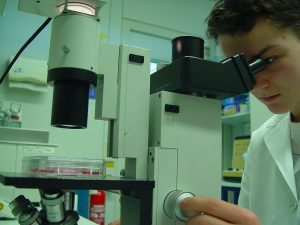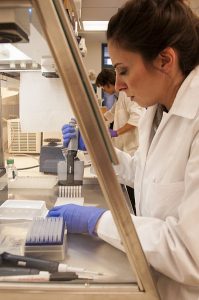Gene editing has become an important social issue the past couple of years. While scientists are years away from creating so called “designer babies,” the technology that allows the gene editing capability has already seen lots of controversies.

Gene editing occurs during DNA replication (as pictured). (Photo Source: © Madprime and under a Creative Commons Attribution-Share Alike 3.0 Unported license.)
Recently, a Chinese scientist’s claim to have created a gene-edited baby caused an outcry within the global science community. While gene editing for reproductive purposes is effectively banned in the U.S. and most of Europe, China allows it with certain restrictions. Gene editing for research on embryos in China is allowed, but those embryos cannot be matured for more than 14 days. Since the scientists claim, China has unveiled new draft regulations on gene editing and other potentially risky biomedical technologies.
So, what is this technology that has caused such uproar. Gene editing has become a lot more effective sine CRISPR was introduced. CRISPR, which stands for Clustered Regularly Interspaced Short Palindromic Repeat DNA sequences, has become an indispensable tool in biological research.
Gene editing and CRISPR technology has become a lot more mainstream in recent years. Even late night talk show hosts are starting to facilitate discussions on the importance of taking this technology seriously.
Source: LastWeekTonight, Youtube. Published on July 1st, 2018.
Imagine DNA as a line of text on word processing, CRISPR allows you to cut out the text you don’t want and paste in a replacement. Within a cell, when the DNA is cut the cell takes over where the DNA was broken and makes a precise change accordingly.
The potential to use this technology is stimulating discussions and responses around the world. As scientists it is important that we are taking the lead in communicating the benefits and potential downfalls of this technology. The role of scientists communicating the intricacies of gene editing effectively is vital to having an open and informed discussion about where this technology will take us.
– Gillian Okura



